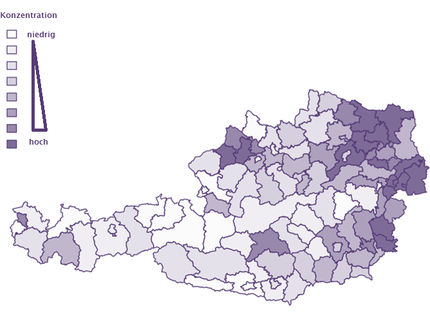Drug residues in wastewater
Private households mainly responsible
Most drug residues discharged to wastewater come from private households. As contributors of pollution by Active Pharmaceutical Ingredients (APIs), health establishments, such as hospitals, psychiatric and nursing facilities are hardly worth mentioning. They merely discharge a small amount, and only at local level, of these significant contaminating substances to wastewater. These are the findings, which the sustainability researchers at Leuphana University of Lueneburg in collaboration with the Ortenau Klinikum at Offenburg-Gengenbach, have come to.
The research team led by Prof. Dr. Klaus Kuemmerer analyzed drug consumption data from a hospital, a psychiatric clinic, and a nursing home in southwestern Germany. Based on the thus-determined consumption patterns, the researchers identified 50 frequently administered substances, which are generally and particularly associated with discharge to wastewater. In a second step, the researchers compared the average of the three-year total consumption of these drugs by health-care establishments with the total annual consumption of selected substances by German households. To do so, they used the German Arzneiverordnungsreport (Drug Prescription Report), published annually, which lists all the drugs, which patients on the public health scheme are prescribed by German doctors' surgeries.
The results reveal that, after a comparison at national level, the vast number of substances tested show a clearly higher average consumption - thus more contaminant emissions - by private households than health care facilities. Thus, the consumption of drugs acting on the digestive tract or the cardiovascular system is 15 to 500 times lower in hospitals than in private households. In psychiatric clinics, the difference factor is even as high as 2,500. Even the consumption of painkillers in hospitals only accounts for a relatively small share of total consumption which is of only 22 percent in the case of Metamizole, the most widely used painkiller. Considerable quantities were only identified in the consumption of the sedative Clomethiazole by hospitals, as well as neuroleptic quetiapine and the antidepressant Moclobemide by nursing homes. In a regional perspective, specific APIs like these can, therefore, be ascribed to certain health-care facilities as emission sources.
The Lueneburg researchers' study demonstrated for the first time that, at national level, psychiatric hospitals and nursing homes only contribute a modest proportion of APIs discharged into municipal wastewaters compared to private households. Previous studies had only shown this to be the case for General Hospitals. The researchers' methodical approach - to model the prediction of API emissions based on consumption patterns - is new. "Our study has shown that consumption patterns provide at least as accurate a picture of wastewater pollution by individual substances as wastewater measurements themselves" said Manuel Herrmann, principal author of the study. "However, with respect to the measurement procedure, our method combines the advantages of being far less complex and less costly. Thus, contamination can easily be predicted, and policy and management can react appropriately and promptly."
Original publication
Herrmann, Manuel; Olsson, Oliver; Fiehn, Rainer; Herrel, Markus; Kümmerer, Klaus; The Significance of Different Health Institutions and Their Respective Contributions of Active; Pharmaceutical Ingredients to Wastewater. Environment International 85, 61-76 (2015).
Most read news
Original publication
Herrmann, Manuel; Olsson, Oliver; Fiehn, Rainer; Herrel, Markus; Kümmerer, Klaus; The Significance of Different Health Institutions and Their Respective Contributions of Active; Pharmaceutical Ingredients to Wastewater. Environment International 85, 61-76 (2015).
Topics
Organizations
Other news from the department science

Get the life science industry in your inbox
By submitting this form you agree that LUMITOS AG will send you the newsletter(s) selected above by email. Your data will not be passed on to third parties. Your data will be stored and processed in accordance with our data protection regulations. LUMITOS may contact you by email for the purpose of advertising or market and opinion surveys. You can revoke your consent at any time without giving reasons to LUMITOS AG, Ernst-Augustin-Str. 2, 12489 Berlin, Germany or by e-mail at revoke@lumitos.com with effect for the future. In addition, each email contains a link to unsubscribe from the corresponding newsletter.



















































